Ethical Jewelry: What Does It Really Mean?
When you’re looking for an engagement ring, the old saying goes, “a diamond is a girl’s best friend.” Diamonds are suppose to represent your marriage, they last forever and are apparently impossible to break. Unfortunately, due to the state in which diamonds are mined today, many women can find themselves looking down at their engagement ring and feeling a little bit of guilt. The diamond on their ring may be a conflict diamond, meaning it comes with a dark history.

Ethical Diamonds ?
These days, brides-to-be are bombarded with messages when they get ready to purchase an engagement ring. A theme that regularly appears is ‘conflict free’ or ‘environmentally conscious’. Promises of environmentally sustainable mines and peaceful stones are advertised heavily in the industry today. But just how accurate are these labels and what do they really mean?
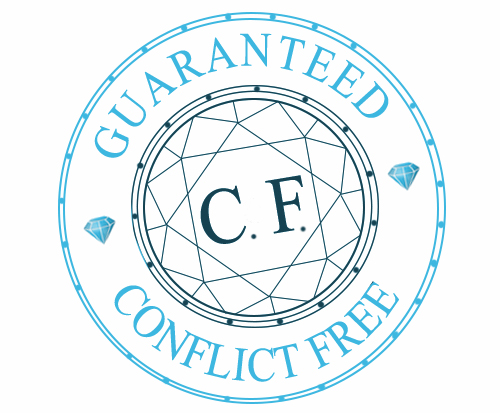
What Are Conflict Diamonds?
Conflict diamonds, also commonly known as blood diamonds, are stones that were mined in Africa under cruel conditions. These diamond mines are seized by warlords who oppose legitimate government. They use the profits from diamond sales to fund their war efforts. In some instances hundreds of miners are killed when a mine is taken over, forcing women and children to work inside the mines under unsafe conditions. Refusal to work, or slow workers are punished with death or have their limbs amputated. The money gained from the sales of these blood diamonds are then used to further their war efforts by buying weapons, leading to a vicious cycle of violence.
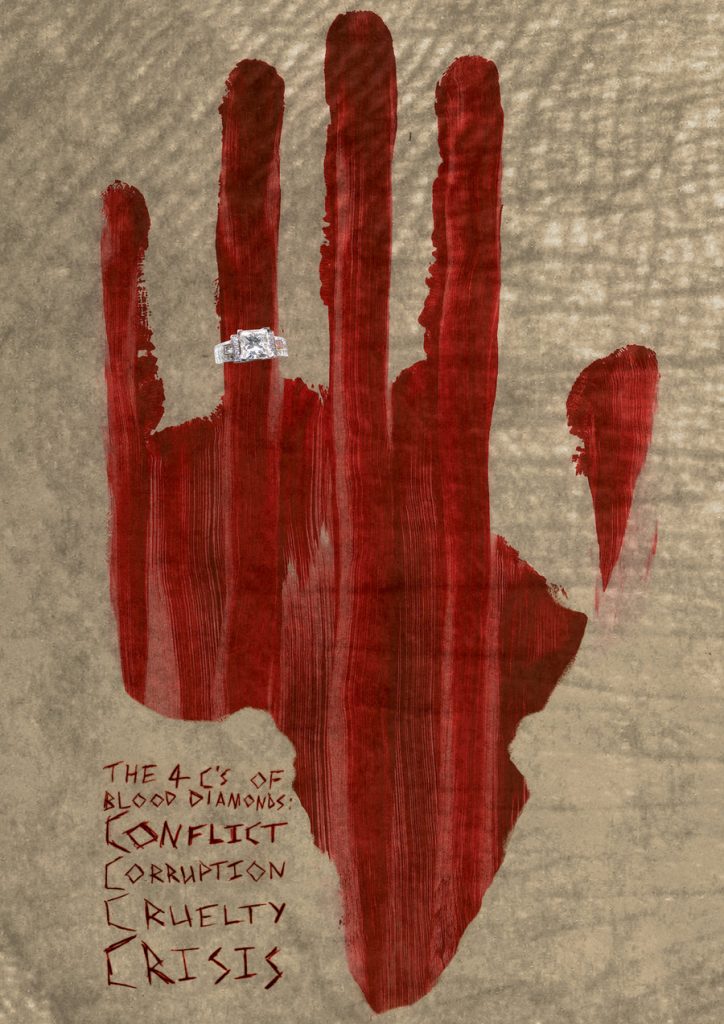
The Kimberley Process
The awareness of conflict diamonds has surfaced in past years, and as the diamond industry suffers from negative press, steps have been taken to try and combat this issue. Today, The Kimberley Process is one such step that aims to regulate the entire diamond trade. The goal of the program is to ensure that each and every diamond can be identified and traced; ensuring it’s peaceful mining conditions.The participants in the Kimberley Process make up roughly 99.8% of the diamond trade, and are usually government officials. Sounds promising, or is it?
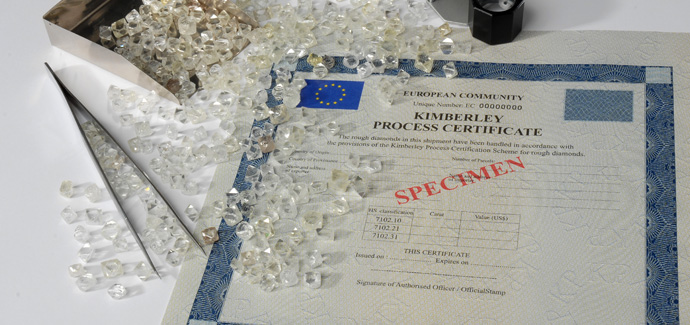
Unfortunately, this process is heavily flawed. For starters, this process is entirely voluntary, no one is actually required to participate in it. Often times, the governments which participate are the central cause of corruption in their countries. Diamonds flooding through this system are still mined by those forced to do hard labor with little to no financial reward. Miners are taxed when they bring their diamonds to sell at centers that follow the Kimberly process, making many whiling to smuggle their finds out and sell to non-reputable dealers. Another problem is that conflict diamonds can be sold off to participants in the Kimberley Process and mixed in with legitimate diamonds. Anyone can walk into a diamond buying office selling goods that they claimed to have mined themselves. While the intention is good, it does not ensure that any diamond you buy is not a blood diamond.
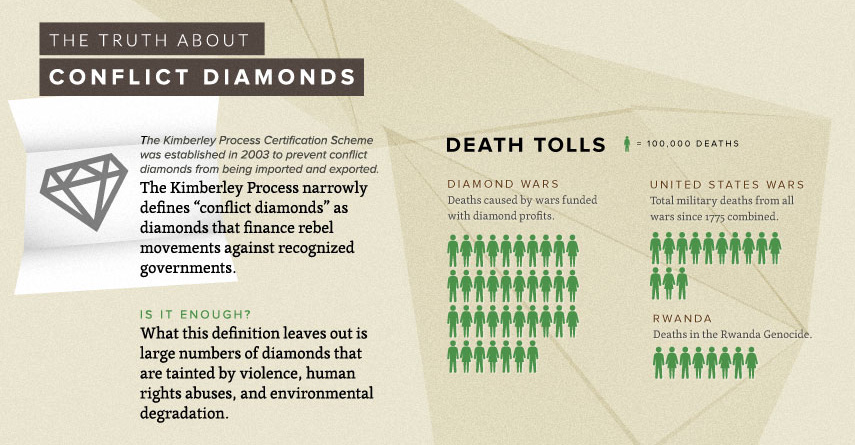
Conflict Free But Environmentally Sound?
For those people who don’t want to deal with the ethical dilemma of purchasing diamonds, there are other alternatives. Many retailers today get around the conflict diamond problem by providing stones that come from places outside war torn areas of Africa. For example, mines in Canada and Russia produce diamonds, and they are free from the conflicts that plague some diamond producing nations. However, there is a premium to pay when purchasing diamonds from countries that are conflict free. Often, you will end up paying a higher price for a lower quality diamond since the mines in Canada and Russia produce less gem quality diamonds than those in Africa. While these diamonds may be free of civil wars and human suffering, they are not by any means free from negative environmental impact.Diamonds aren’t cheap, if you’re going to spend a decent amount of money, you want a high quality product that’s both conflict free and environmentally sound.
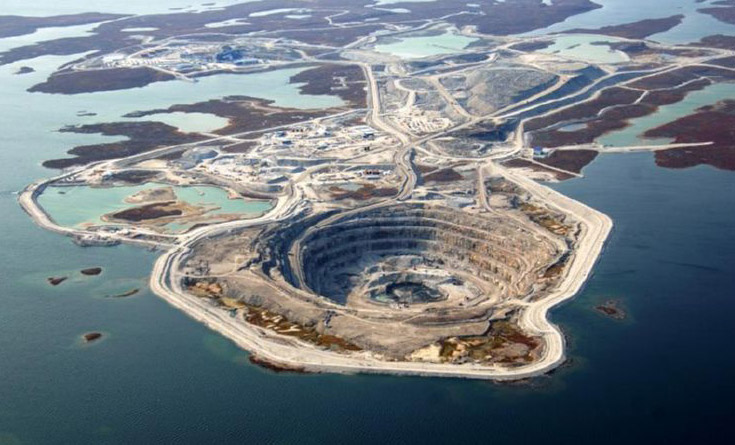
The Rise Of Synthetic Diamonds
An even more popular option these days is that synthetic diamond, man made in a lab. These man-made diamonds are free of conflict, and likely to surpass rough diamonds in terms of popularity due to their lower pricing and fine quality. Synthetic diamonds and natural diamonds have the same exact makeup, the only difference is where they come from. Synthetics are not just completely conflict free, they are also environmentally responsible. Mining on an industrial scale, like the mines in Canada and Russia, cause land to become dry and brittle over time. Large drills and equipment used in mining use vast quantities of water. It takes many decades to replenish land that has been used for mining over the years if it can be done at all, the synthetic process would be free from any of these problems.
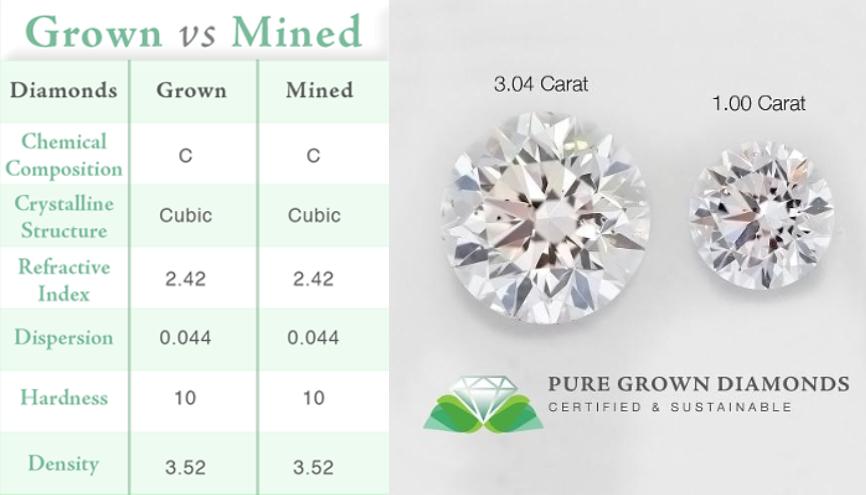
While synthetic diamonds are great, there have been many issues along with the growth of this industry. While all reputable synthetic diamond growers will label their stones as such, many individuals have been selling lab created stones as natural diamonds. This revelation will most likely lead to the devaluing of the natural diamond industry until they can find a fool proof method of detection.
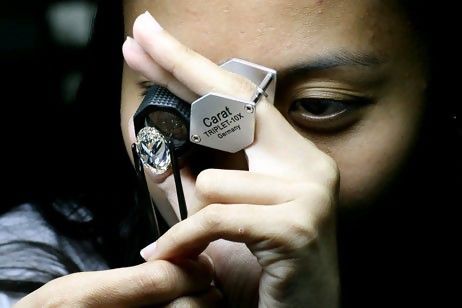
Why Sapphires Are The Solution
There is really only one solution for those who absolutely want to avoid the problems associated with conflict diamonds – don’t get a diamond at all. Sapphires are ethical jewelry, becoming more popular these days as awareness to the problems with diamonds have come to light. Sapphires are easily traceable,since most of them come from small, family-run mines. By purchasing a sapphire you are helping to support a local area that generates most of their economy by the sale of sapphires. Gem quality sapphires used in jewelry is often not made in a lab. Natural sapphires are still priced reasonably since all sapphires can be heat treated to improve color, lab grown sapphires are not common. You can be sure that the stone you’re getting is natural and will only appropriate in value with time. Lastly, sapphires are simply more affordable than diamonds. You don’t have to pay a lot to get a high quality sapphire stone that will look great on your finger.
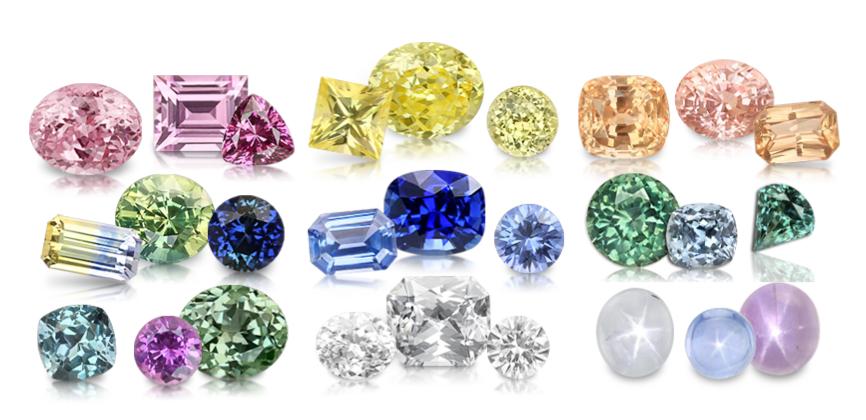
What Are You Thoughts?
Let us know what you think. Does knowing that the diamond you are looking to purchase could be a conflict diamond deter you? Are you willing to sacrifice some quality in your diamond to be sure that it isn’t a conflict diamond? Or could you see yourself foregoing a diamond altogether and going with sapphire engagement ring instead?
